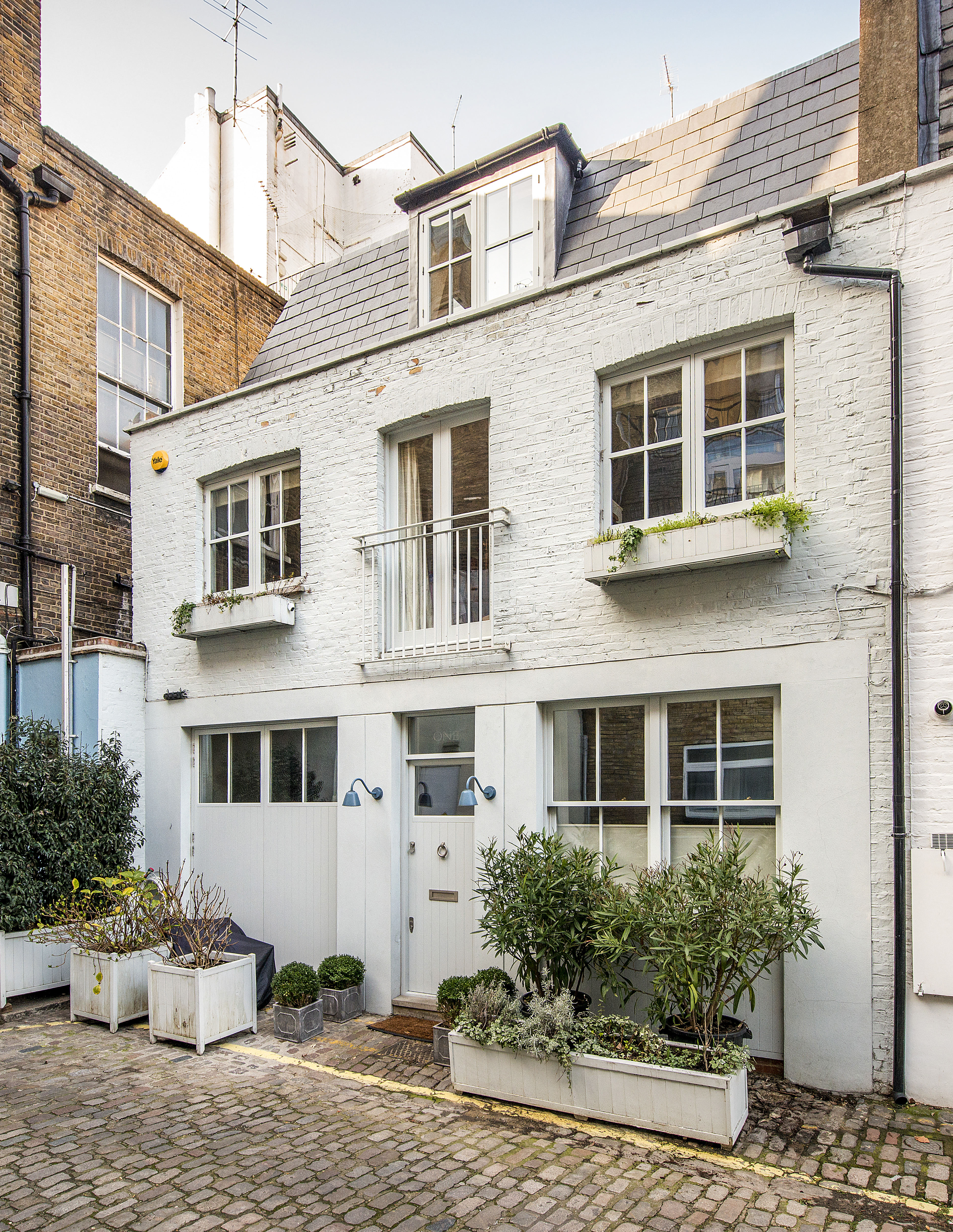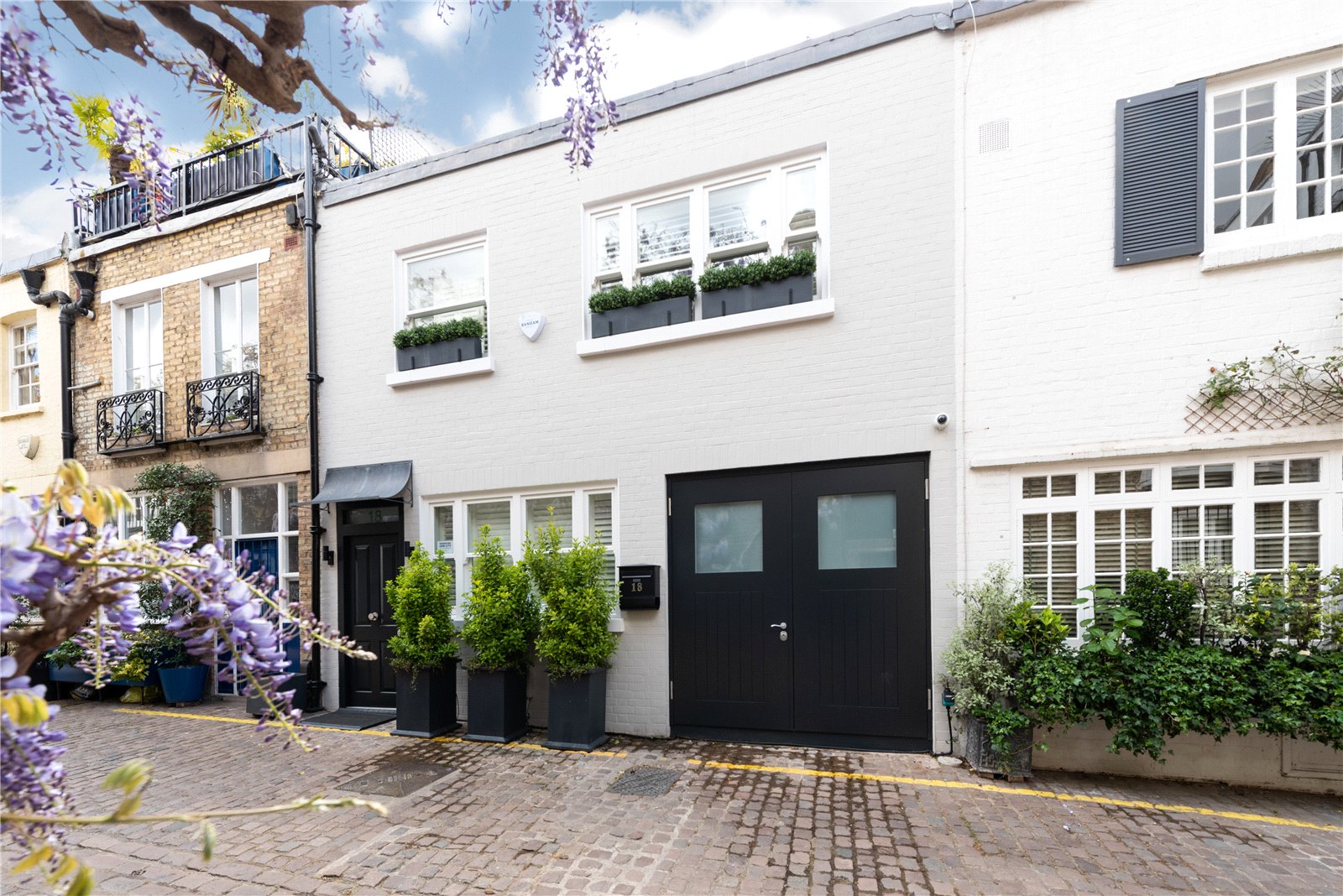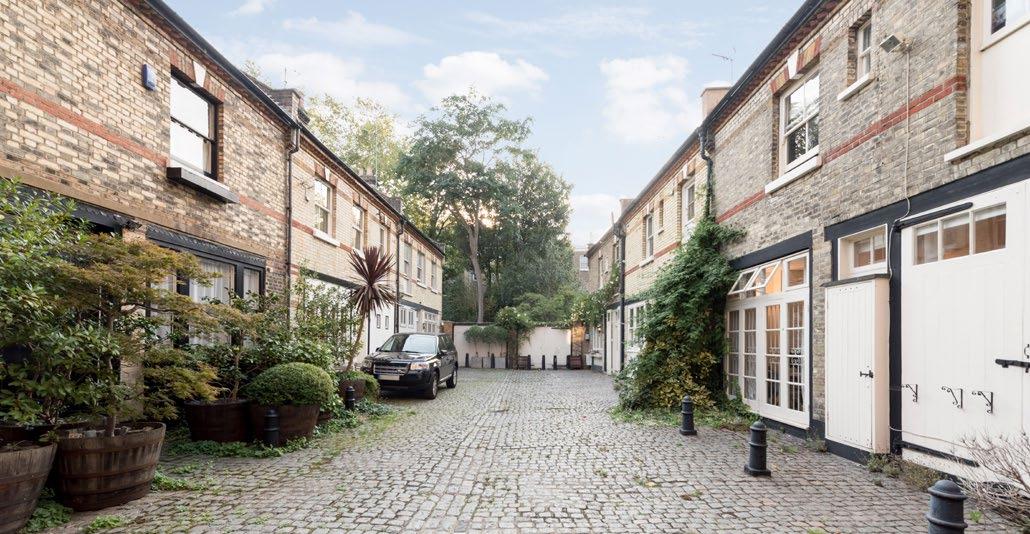Why Mews are the Happy Medium

By ZOE DARE HALL
When, exactly 50 years ago, Lurot Brand began selling mews houses in central London, they were far from in vogue.
Indeed, other agents were keen to offload what were, back then, simple two-storey buildings in back alleys, mainly used for storage, or for housing staff who worked far grander townhouses nearby.
Lurot Brand’s founder, Antoine Lurot sensed a missed opportunity and was eager to add these unloved, overlooked properties to his books. He knew that here was a real opportunity, with a type of property that offered rare garage parking (a boon to a rally driver at the time) and a central London location, in semi-private streets with a strong sense of community.
Half a century later, the change of usage and ownership of mews houses has transformed beyond recognition, and values have gone through the roof. What cost £15,000 in 1971 would now be worth around £3,000,000. In the last 25 years, the price of houses in Kynance Mews in one of Kensington’s most desirable mews streets, for example – has increased ten-fold.
As London gets a post-lockdown reboot, with normal life starting to return, the London mews may have found its moment. These quiet, often cobbled and flower-filled back-streets of houses with cottage-like charm offer the balance between city and country that could tempt buyers back to London.
“Mews streets are the happy medium,” thinks Marlon Lloyd Malcolm, Lurot Brand’s head of sales. He mentions Kynance Mews, Hyde Park Gardens Mews and Bathurst Mews as examples of streets “as near as you can get to country living” in central London.
We expect a seasonal shift in September

“The countryside may have seemed blissful during lockdown, but as it feels like a new dawn and a beacon of fun again in London, people are realising that the countryside can’t compete. They’re starting to miss the city.”
In a year of continued disruption, the mews market is standing strong. “In a pre pandemic year, there would be between 100-120 mews sales across the whole of prime central London, where we would typically sell 30-35% of them. By the end of July 2021, we had already sold 73% of target, so we were 15% ahead of where we projected to be in a normal year,” comments Lloyd Malcolm. “The other remarkable fact; we have only one agreed sale which has fallen through. It tells us that buyers wanting to do these transactions are owner-occupiers, and they are emotionally committed to finding a home. They are typically very picky, but once they have found the mews, they are then certain, and will follow through” says Lloyd Malcolm.
Desirability may be relatively high for this niche market of prime central London property, but vendors should not expect to be knocked down in the rush of prospective buyers. “Pre-Covid, we would typically see 20-25 viewings per house that gets agreed. Now we’re seeing four. Gone are the window shoppers,” Lloyd Malcolm comments.
That’s good news for vendors, ultimately; fewer house-hunters traipsing through the front door before the sale is secured mean far less disruption and hassle. But it can also be unnerving for owners as they tend to equate a lack of volume of prospective buyers with a lack of interest. “The hardest part of the sales process at the moment is the ‘tumbleweed’ of silence before a buyer comes along,” says Lloyd Malcolm.
And though this has been another atypical summer, with foreign travel still fraught with complications, August is seeing its usual lull as many families disappear on holiday in the UK. “We expect a seasonal shift in September,” he adds.
More buyers might be tempted, of course, by lower asking prices. But bar the odd exception, mews owners are not usually people who need to sell. “We, as agents, need to feel confident that we have priced our properties fairly, based on what else is selling and how our properties compete. Then we have to manage everyone’s patience including our own!” says Lloyd Malcolm.

So who are today’s highly-motivated mews buyers at the tail end of a global pandemic? At the start of the year, the picture was dominated by relatively young, successful individuals or couples buying their first house. “They have no intention of moving to the countryside in their twenties and thirties,” Lloyd Malcolm comments. “Now we are seeing a flurry of older couples whose children are at university, or have just started work. These couples usually have a country home and are looking for a city base because they feel that everything is being switched back on in London.”
The rental market for mews is busy, too, with corporate relocations starting to re-emerge on the London radar, and with tenants adjusting their priorities, after lockdown, and looking to upgrade in size and live more centrally. “In the weeks leading up to ‘Freedom Day’, we saw ten times as many leads for rentals as we did in the same week pre covid.” Mollie Swallow, Head of Lettings.
Some legacies of the pandemic on househunters’ priorities are here to stay. “Buyers and tenants want a work from home office. It needn’t be big, but somewhere they can pull the door and talk on videos undisturbed. Often couples want a home office each, so tenants who would have previously looked at two-bed properties are now wanting three or four bedrooms as they both work from home,” Lloyd Malcolm observes.
Video tours of properties, on a 3D platform such as Matterport, are now expected too, “although in the same way that working from home cannot replace the experience of being with colleagues in the office, virtual tours are no substitute for seeing a property in person,” says Lloyd Malcolm.
Outside space remains a big talking point – but memories of warm nights, filled with rosé and barbecues, fade fast along with the dying Autumnal light. Buyers wanting large family houses, and gardens, are fuelling the market in outer prime London, but outdoor space is less of a pull for buyers looking in central London.
Mews have come a long way in half a century. And maybe, in post-pandemic London, this is their time to shine.
